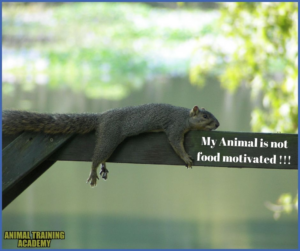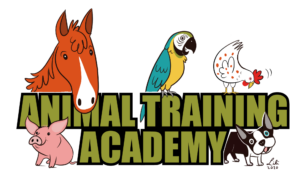Barks Blog
My Animal Is Not Food Motivated – AT ALL! [Your 9-point motivational checklist]
By Ryan Cartlidge

Have you ever wanted to train an animal that was ‘not food motivated’?
This challenge is something I have often heard people tell me over the years! And I always think to myself, “does your animal eat?” If the answer is ‘yes’, I’m curious if we can say it’s not food motivated.
An alternative way to describe these animals could be to say, ‘they’re potentially not motivated by the kind of food you are offering, the way you are offering it and/or the context you are offering it under!’
Below are eight ideas to consider if you feel your animal might not be motivated to train for food.
1) Is there an underlying medical issue you don’t know about!
Regardless of what behavioural intervention and/or training we might be doing for our animals, checking that they are in good health is always step number one. Book an appointment with your vet to get their expert opinion.
Also, consider specific veterinarian subject matter experts that might focus on certain physiological areas of your animal’s health. For example, a gastro expert (it could be possible for health issues to be missed, especially if you consider rarer conditions).
2) Is your animal just not eating in your presence?
What happens if you leave the food there and walk away? Does the animal eventually eat it? Does the animal’s latency (the time it takes) to come and get the food decrease over time?
This might happen if we work with a fearful, nervous, aroused or anxious animal. (Note: what the observable behaviours are that aid us in hypothesising how our animals are feeling can vary significantly between animals and contexts).
You could also potentially try a remote feeder such as a manners minder [also known as Treat & Train] or put a tutor in this situation. Or present the food on a long stick and/or pair of tongs?
3) Have you tried to use food in different contexts?
There are always competing reinforcers on offer in our animal’s environment. Consequently, using food for training in a less distracting environment could be a great place to start.
For example, your dog might readily take food at home but not out at the dog park!
If you are experiencing this situation, implementing a training plan that slowly increases more and more distractions over time is something to consider.
4) Have you reached out and asked your network for their thoughts and input?
This can often lead to new ideas and thoughts. My recommendation is to ensure that you find a community of people you trust and know and who share the same values and ethics as you. Whenever I have a problem, I ask Animal Training Academy [ATA] members in the ATA premium membership community areas? (members only FB group and website forums).
5) How are you presenting the food?
I’ve heard some people tell me that their animal won’t eat if they try to hand feed them – however, if they throw the food and the animal gets to chase it, it will eat it!
Maybe offering the food differently might yield different results?
6) Can you use not food reinforcers to motivate your animal?
Maybe you don’t even need to worry about motivating your animal with food, and they will readily work for other non-food related reinforcers. What have you tried so far?
7) Are you leveraging motivation operatives to your advantage?
Examine your animal’s diet, daily routine and eating habits.
Regarding the food item you are attempting to use as a reinforcer; Does your animal have access to this at other times of the day? If so, how much and how often? Possibly by examining your animals daily access to specific high valued food items (for example, only making them available during training and/or select periods), we can make these items seem more valuable & consequently increase motivation to work for them.
I’m not saying you have to give your animals less of a particular item, just suggesting a possible review of where and for how long your animals have access to specific high valued items.
8) Offer variability
How many different food items are you offering your animal? Maybe by adding a lot more variability to what you are trying to offer, you will increase motivation? Or you might find a food item that your animal goes nuts for!
You can even get your animal to choose what reinforcer they want by teaching them to pick! I have seen this done well with animals being able to point to food items they wanted – from a selection offered in front of them.
About Ryan Cartlidge
Ryan Cartlidge is a professional animal trainer who’s been working around the world, including in New Zealand, Australia, Canada, and the US. He’s trained teams, developed animal training programs, been published in leading industry magazines, spoken at international conferences, and delivered presentations in a University on animal behaviour.
And through the Animal Training Academy, he connects hundreds of animal behaviour and training enthusiasts with an extensive and growing library of lessons and tutorials delivered by renowned animal experts.
Check out Animal Training Academy here, specifically the free ATA Podcast, and the free animal training and behaviour course.


